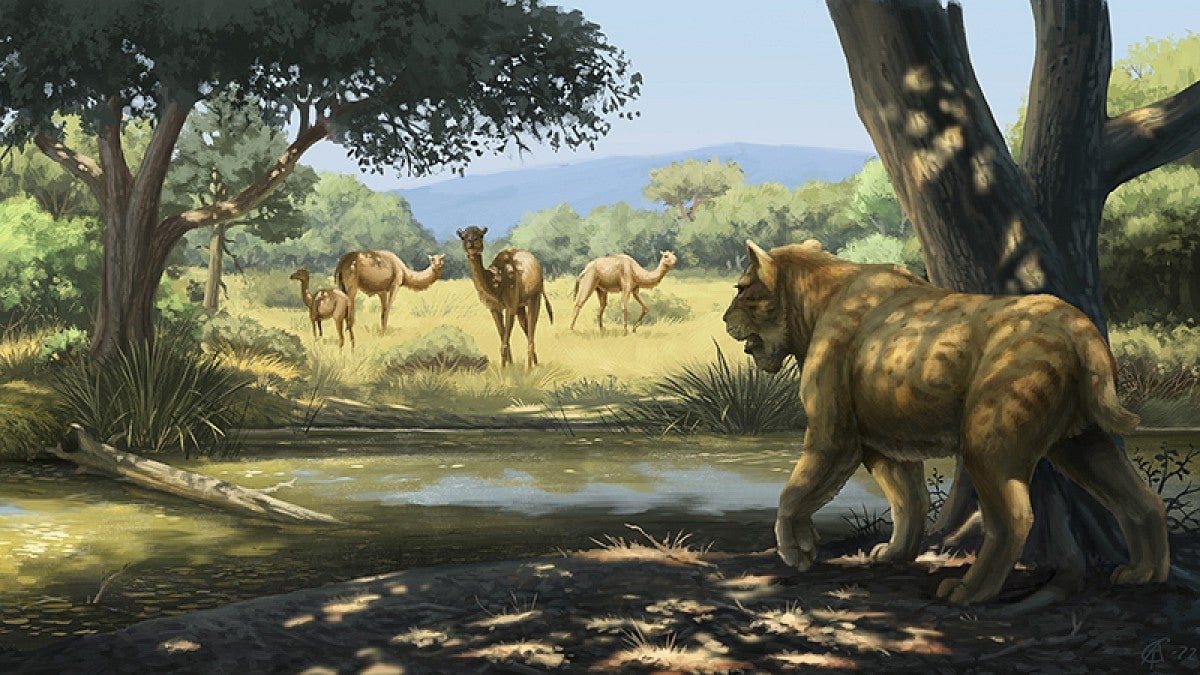Large-scale wildfires, possibly started by humans, in an ecosystem made fire-prone by climate change caused the disappearance of saber-toothed cats, dire wolves and other large mammals in Southern California nearly 13,000 years ago.
That’s the conclusion from a new study by a team of researchers led by La Brea Tar Pits scientists and including a University of Oregon professor and postdoctoral researcher.
Published in the journal Science, the peer-reviewed study breaks new ground in a decades-long scientific debate over what triggered the Earth’s last major extinction event. Supported by the precise dating of fossils preserved at La Brea Tar Pits, the research advances understanding of the dynamics between dramatic environmental change, human population growth, wildfire activity, and the abrupt disappearance of the large Ice Age animals known as megafauna.
“The significance of this research will resonate for decades well beyond the scientific field,” said Lori Bettison-Varga, president and director of the Natural History Museums of Los Angeles County.
Among the many animals that went extinct by the end of the Pleistocene epoch were mammoths, dire wolves, cave lions and saber-toothed cats.
“Time series modeling implicates large-scale fires as the primary cause of the extirpations,” the researchers wrote. “We argue that the catalyst of this (ecological) state shift appears to have been mounting human impacts in a drying, warming, and increasingly fire-prone ecosystem.”
What’s more, researchers said, the conditions that led to the extinctions parallel the increasing frequency of wildfires taking place in Mediterranean-type ecosystems today.
“There is a strong suggestion that human activity was responsible for the change in fire frequency,” said Edward Davis, director of the Condon Fossil Collection at the UO’s Museum of Natural and Cultural History. “I think it is appropriate for us today to note the current change in fire frequency and be concerned about the way that will change the flora and fauna of North America.”
The museum at La Brea Tar Pits holds the world’s largest collection of fossils from the Ice Age and has been central to the study of animal and plant life at the end of the Pleistocene epoch for more than a century. Davis and postdoctoral researcher Elena Ghezzo were researching the fossil American Lions from the La Brea Tar Pits.
“The vast collection of Ice Age fossils in Los Angeles opens a unique window on the timing and dynamics of large mammal extinction in Southern California,” said Robin O'Keefe, a professor of biological sciences at Marshall University and lead author. “Going into the carbon dating effort, the team was not prepared for how starkly our data would depict this story, nor for how profound the implications would be."
O’Keefe noted that the paper has 19 authors and that each one contributed important data. The vast fossil collection at the tar pits museum also was key, he said.
“Without the ample numbers of many extinct species available at La Brea Tar Pits, we would not have had the statistical power to pose the kinds of questions we ask, nor to answer them with the precision and rigor necessary to tell this grave and poignant story,” O’Keefe said.
—By Lexie Briggs, Museum of Natural and Cultural History
—Top photo: Illustration of an Ice Age saber-toothed cat stalking camels (Illustration by Cullen Townsend)


